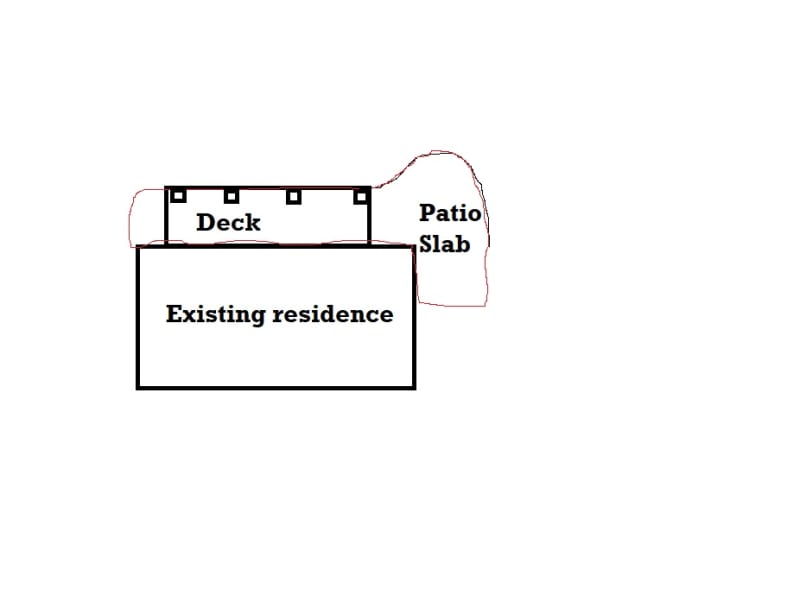ml5299
Structural
- Aug 23, 2021
- 4
Hey everyone,
I am working on a project that involves attaching a 2nd story deck to an existing building (residential). The existing building has a poured frost wall in northeast climate (NY).
For the deck, current plans are to dig footers for 4 sonotubes using bigfoot bf28 footers and then use 12" sonotubes over the bigfoot. There will be a patio concrete slab poured on the ground level, which originally we were planning to isolate from the sonotubes (small joint around top 5-6" of sonotube and fill in with caulk). We are not fans of the looks of sonotubes and the potential cracking around the area. As an alternative to this approach, the concrete contractor suggested doing a "trench pour", the entire length of the deck + 4 ft on each end. This is where we'd fill in a 24" trench along the length of the front deck and then the concrete patio slab would tie into via rebar and sit on this 'footing'. The slab would then be "floating" everywhere else, separated from the existing foundation by expansion joint.
This approach was interesting as it would allow the entire slab to be poured without visible "sonotubes" at the surface. The bracket for the posts would be right on the slab more centered around the 24" footer. And I also liked the idea about the weight from the deck onto the footer would be more evenly dispersed opposed to sitting on just 4 sonotubes.
The contractor also said they did a lot of homes this way in the area.
Has anyone heard of this before to support decks? Any idea on the pros & cons? Should I just stick with conventional sonotubes separated from the floating patio slab?
Thanks in advance..
I am working on a project that involves attaching a 2nd story deck to an existing building (residential). The existing building has a poured frost wall in northeast climate (NY).
For the deck, current plans are to dig footers for 4 sonotubes using bigfoot bf28 footers and then use 12" sonotubes over the bigfoot. There will be a patio concrete slab poured on the ground level, which originally we were planning to isolate from the sonotubes (small joint around top 5-6" of sonotube and fill in with caulk). We are not fans of the looks of sonotubes and the potential cracking around the area. As an alternative to this approach, the concrete contractor suggested doing a "trench pour", the entire length of the deck + 4 ft on each end. This is where we'd fill in a 24" trench along the length of the front deck and then the concrete patio slab would tie into via rebar and sit on this 'footing'. The slab would then be "floating" everywhere else, separated from the existing foundation by expansion joint.
This approach was interesting as it would allow the entire slab to be poured without visible "sonotubes" at the surface. The bracket for the posts would be right on the slab more centered around the 24" footer. And I also liked the idea about the weight from the deck onto the footer would be more evenly dispersed opposed to sitting on just 4 sonotubes.
The contractor also said they did a lot of homes this way in the area.
Has anyone heard of this before to support decks? Any idea on the pros & cons? Should I just stick with conventional sonotubes separated from the floating patio slab?
Thanks in advance..

